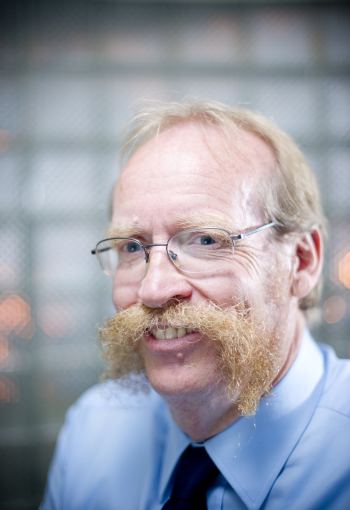
Robert Burrell has been nominated for an ASTech Award from the Alberta Science and Technology Leadership Foundation. Burrell is the inventor of Acticoat, a revolutionary dressing considered one of the most radical advances in wound-care history.
Edmonton-Robert Burrell was touring burn units at Australian hospitals in October 2002 when victims of the Bali terrorist bombings began to arrive in emergency rooms.
Harried medical personnel invited Burrell into operating theatres at the Royal Brisbane Hospital to provide technical advice on the use of Acticoat, a silver-based wound dressing he invented. Used in burn units and in neonatal care centres around the world, Acticoat has antimicrobial properties that speed healing. The revolutionary dressing is considered one of the most radical advances in wound-care history.
"It was almost overwhelming to see the dressing being used under such tragic conditions, but there was a tremendous satisfaction in seeing the results of its use," said Burrell. "Many people can alter the bottom line for a company, but very few people can alter the outcomes of people's lives. I am lucky to be one of the few."
A chemical and materials engineering professor, Canada Research Chair in Nanostructured Biomaterials, and chair of the Department of Biomedical Engineering at the University of Alberta, Burrell invented Acticoat in 1995 while working for Westaim Corporation's Nucryst Pharmaceuticals.
His work has been recognized internationally and he has now been nominated for a prestigious ASTech Award from the Alberta Science and Technology Leadership Foundation. The awards ceremony is set for Nov. 12.
Burrell developed the nanostructured silver Acticoat bandage while working with privately owned Westaim Biomedical of Fort Saskatchewan and the University of Alberta Faculty of Medicine and Dentistry. The dressings are used as an antimicrobial barrier over partial and full thickness wounds, including first and second degree burns, donor and recipient graft sites, pressure ulcers, venous ulcers and diabetic ulcers.
Acticoat was instrumental in treating burn victims of the terrorist attack in Bali, Indonesia, and the Station Night Club fire in Rhode Island.
In 2002, Burrell was in Australia on a speaking tour to introduce doctors to Acticoat when terrorists bombed a Bali nightclub, causing hundreds of deaths and burn injuries. This was literally a test by fire for Burrell's dressing, as patients were flown home to Australia for treatment.
"I spent the next five days in the operating theatres in all of the major burn units in Australia," Burrell said. "We applied Acticoat on young people whose bodies were 80- to 90-per-cent burnt. It worked very well."
Burrell began the research that led to Acticoat in 1991, spurred by the historical use of silver as an anti-microbial. Through trial and error, he discovered that only through a nanocrystalline structure does the silver work as a potent anti-microbial and anti-inflammatory agent. The silver crystals used in Acticoat, as small as 20 atoms in size, speed healing and prevent scarring.
The dressing's long-acting properties reduce the frequency with which bandages on burn victims need to be changed-an extremely painful, disruptive process-from up to 10 times a day to as few as once every three to seven days. Its unique properties also allow burn wounds to be examined without the problems of external film formation and inflammation.
"No other burn dressing has the dual ability of Acticoat to kill bacteria and decrease inflammation. All other treatments pale in comparison," Burrell said. He adds that Acticoat's ground-breaking ability to heal wounds is not its only therapeutic application. Inhaled nanocrystaline silver shows promise in treating severe lung inflammation.
"It's remarkable how Acticoat reduces inflammation in the lungs," Burrell said. "We have 12 patients in the world who have used it in the aerosol form. All 12 were expected to die and all 12 are still alive." Burrell's research team at the University of Alberta, is also researching ocular applications for Acticoat.
Also nominated for ASTech Awards are is Faculty of Engineering Professor Emeritus Daniel Smith, who is recognized as one of Canada's pre-eminent environmental engineering researchers and as an internationally acknowledged authority on water treatment and cold-regions research; and Sirish Shah, a professor in the department of chemical and materials engineering who is nominated for developing new technology that reduces the environmental impact and increases efficiency of oil sands operations.